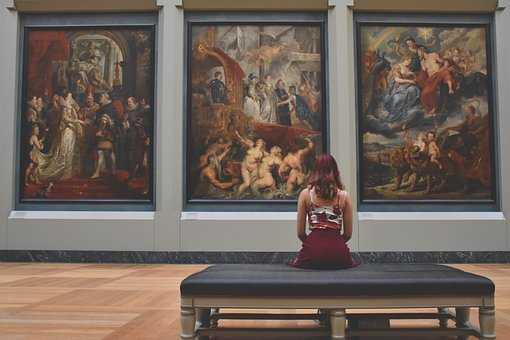Explore the World's Best Ideas
Join today and uncover 100+ curated journeys from 50+ topics. Unlock access to our mobile app with extensive features.
Most important art movements
- Medieval art
- Renaissance 1300–1600
- Baroque 1600–1730
- Rococo 1720–1780
- Neoclassicism 1750–1830
- Romanticism 1780–1880
- Impressionism 1860–1890
- Post-impressionism 1886–1905
- Expressionism 1905–1930
- Cubism 1907–1914
- Futurism 1910–1930
- Art Deco 1909–1939
- Abstract Expressionism 1940s
- Contemporary art 1946 — present
173
728 reads
Fitting art into a timeline
We all come to art history from some perspective. From this perspective, we are likely to build our mental map of how individual artists and styles of art fit together. When we want to place an artist on the art timeline, we should keep in mind that generalisations are useful only up to a point.
For example, Russian painter Wassily Kandinsky would fit into the movement known as Expressionism (1905-1930). But, his work took on different forms as he associated with various artists in other European cities.
89
421 reads
Build up a sense of time and place
After placing the art you are viewing on a timeline, the next step is to build up a sense of time and place that is specific to the artwork and artist.
- Did the artists have friends or contemporaries that may have influenced the style of the work?
- Did the artist have a teacher?
- Did the artist write about their work?
- What materials were available to the artist?
- Was the artist male or female?
- Might race or other specifics of the artists' identity play a role?
- Did the artwork get shown in public? What were the reactions of the first viewers?
92
327 reads
History is interpretation
The way we interact and understand art is dependent on how the narrative of art history has been produced.
For example, art flourished during the Renaissance. One of the main sources about artists of this time comes from the book 'Lives of the Artists', written by Italian Giorgio Vasari during the 16th-century. Vasari draws a similarity between the passage of time and the artistic achievement of Italian artists. In writing about his fellow countrymen, Vasari wanted to promote the Italian Renaissance to the elevated position of high-achievement in all of art history.
90
362 reads
Many forms of art have developed independently
The idea that art is about progress is appealing to historians because it gives a simple linear-narrative framework. But this view tends to be exclusive in that it views Western art as the main story of art history without considering Islamic art, Turkish art, Japanese art, or West Africa's art.
Vasari was an Italian living in Florence and interested in how the art around him was made. We should remember that all art history is tilted with a bias towards the storytelling.
86
378 reads
IDEAS CURATED BY
Liza Mills's ideas are part of this journey:
Learn more about artsandculture with this collection
Different Easter traditions around the world
The significance of Easter eggs and bunnies in modern culture
The importance of the holiday in the Christian faith
Related collections
Similar ideas
5 ideas
What Is Impressionism in Art?
thoughtco.com
7 ideas
Centers of Progress: Florence (Art)
humanprogress.org
5 ideas
How to Read a Painting
lifehack.org
Read & Learn
20x Faster
without
deepstash
with
deepstash
with
deepstash
Personalized microlearning
—
100+ Learning Journeys
—
Access to 200,000+ ideas
—
Access to the mobile app
—
Unlimited idea saving
—
—
Unlimited history
—
—
Unlimited listening to ideas
—
—
Downloading & offline access
—
—
Supercharge your mind with one idea per day
Enter your email and spend 1 minute every day to learn something new.
I agree to receive email updates

